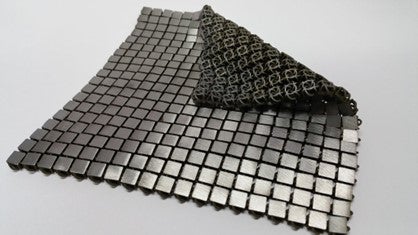
Gone are the days of printing a finished product. 4D printing technology promises self-evolving, kinetic products, with the potential to revolutionise organ implantation and medical device production. NASA is already investing in the technology with a view to creating a transformable ‘fabric’, whilst MIT’s Self Assembly Lab has successfully produced a self-folding surface cube. The technology is in its infancy but, according to CEO and co-founder of bioconvergence startup BICO, Erik Gatenholm, it is part of every company’s future that is in the medical industry.
So what is 4D printing? In essence, it is 3D printing with an extra dimension, namely the product’s ability to transform itself over time. This dimension will largely be achieved by printing with smart materials, such as hydrogels or Shape Memory Polymers (SMPs), which transform in response to external stimuli, such as moisture, heat, light, time, or pH. Theoretical applications include pipes that adjust in size depending on the volume of water required; shoes that adjust to the shape of the wearer’s foot; or – medically – stents that can adjust their shape in vivo.

Discover B2B Marketing That Performs
Combine business intelligence and editorial excellence to reach engaged professionals across 36 leading media platforms.
NASA’s Jet Propulsion Laboratory has already begun exploring the technology’s potential, using 4D printing to create small squares of material that function similarly to chain mail. Designer of the material, Polit Casillas, explained that it is called 4-D printing because “we can print both the geometry and the function of these materials.”
The material offers a myriad of useful functions, including reflectivity, passive heat management, foldability, and tensile strength. It has been posited that the material could eventually shield spacecrafts from meteorites or provide insulation for a trip to Jupiter’s icy moon, Europa.

“This is really the future of medicine as we see it, but it needs to work all the time every time.”
Erik Gatenholm, CEO of BICO
Similar printing techniques are applicable in bioprinting: “a branch of 3D printing dedicated to the creation of living, organic cells by ‘printing’ them one layer at a time.” The smart material ‘ink’ is replaced by bioink, comprised of human cells. Gatenholm explains: “If you count the fourth dimension as being time: you print the little liver part, you print a little skin tissue and then you need to let it grow… you need to know that those cells are alive; they need to live and thrive and produce whatever proteins they have to.”

US Tariffs are shifting - will you react or anticipate?
Don’t let policy changes catch you off guard. Stay proactive with real-time data and expert analysis.
By GlobalDataAlthough we are decades away from printing and implanting a fully functional liver, there have already been significant advancements. In 2022, 3DBio Therapeutics successfully managed to bioprint and implant a human ear for a microtia patient using their auricular cartilage cells. A 3D scan of the patient’s opposite ear allowed the team to grow the print into an exact visual and biological match. According to GlobalData analyst, David Bicknell, bioprinting also has the potential to be a literal lifesaver, using 3D printing technology coupled with organic material to create new organs.
Bioprinting offers other opportunities too, outside of organ generation. CollPlant recently announced the success of its 3D printed breast implants into pigs, commenting that the implants demonstrated “progressive stages of tissue regeneration”. The study offers hope for reconstructive, as well as aesthetic procedures, particularly for postmastectomy patients.
Early successes are promising, but Bicknell reminds us that it is still early days for this fledgling industry. Gatenholm considers the likely roadmap for bioprinting, noting that “cartilage implants are quite low-hanging fruit for medical device companies, then maybe skin replacements and tissue repair… our aim is really to reduce organ shortage and that will take a very long time; it’s a very long-term mission.”
In conjunction with the fledgling bioprinting industry, 4D printing also represents an exciting future for internal medical devices. Various uses are already being studied, including 4D printed bone tissue constructs, able to change shape to cater to personal needs. Printing stem cells has also been suggested, with research into a 4D programmable culture substrate already underway.
Potential uses are wide ranging and include new medical devices, uses in soft robotics and drug delivery, as well as tissue repair and regeneration. However, with the industry still in its infancy, there are significant limitations with printing products to use in vivo: biological systems are hugely complex, and current designs are too simplistic.
Hydrogels and SMPs are the most common materials currently available for 4D bioprinting; however, these materials respond only to one stimulus, limiting the products to simplistic transformations, not yet adequately reflective of human complexity. There are additional questions around the activation and deactivation of 4D printed constructs, as well as biocompatibility and the exposure to stimuli inside the human body.
Despite these limitations, the industry is doubtlessly promising. As bioprinting and 4D printing technologies evolve, some companies will emerge as industry leaders. Bicknell considers which companies are positioned strongly: “Leaders include BICO, which in May 2022 bought Allegro 3D – a provider of technology to bioprint and fabricate human tissue models. Other key players are Cellink, Cyfuse Biomedical, Organovo, Precise Bio, and 3D Systems, which in May 2021 bought Allevi. This is a vibrant, innovative area, and I expect several more M&A deals in 2023.”





